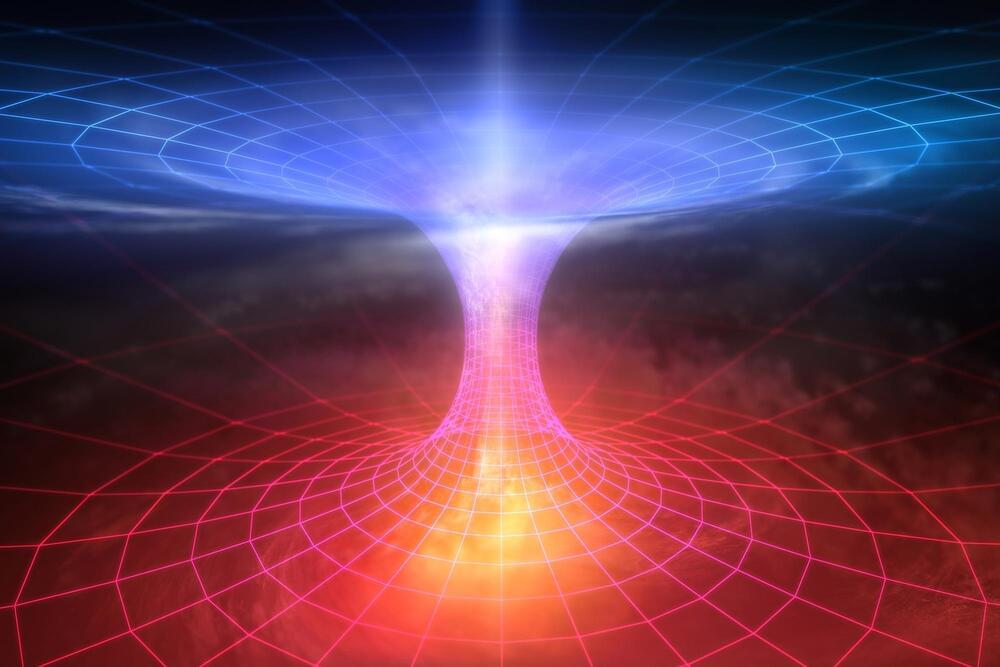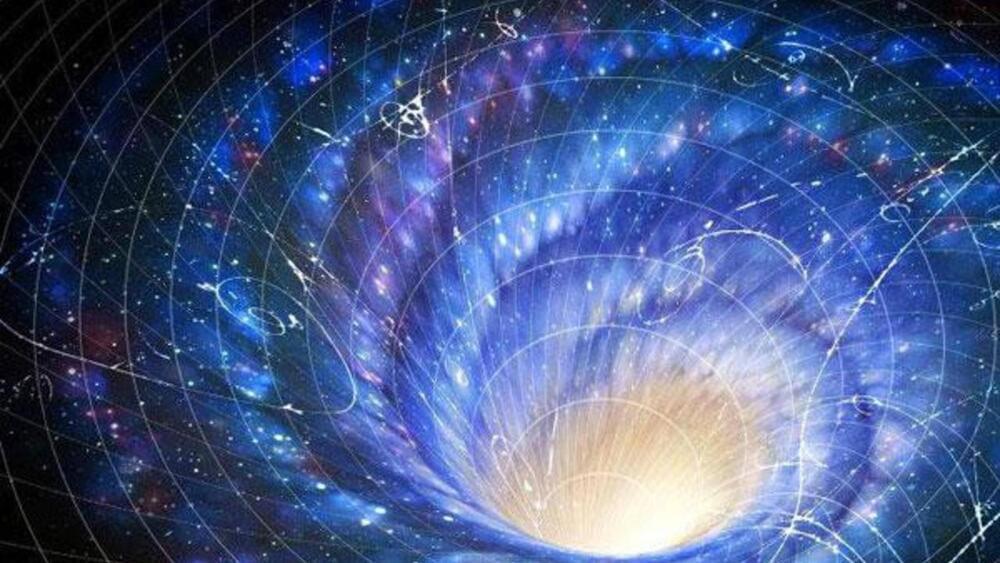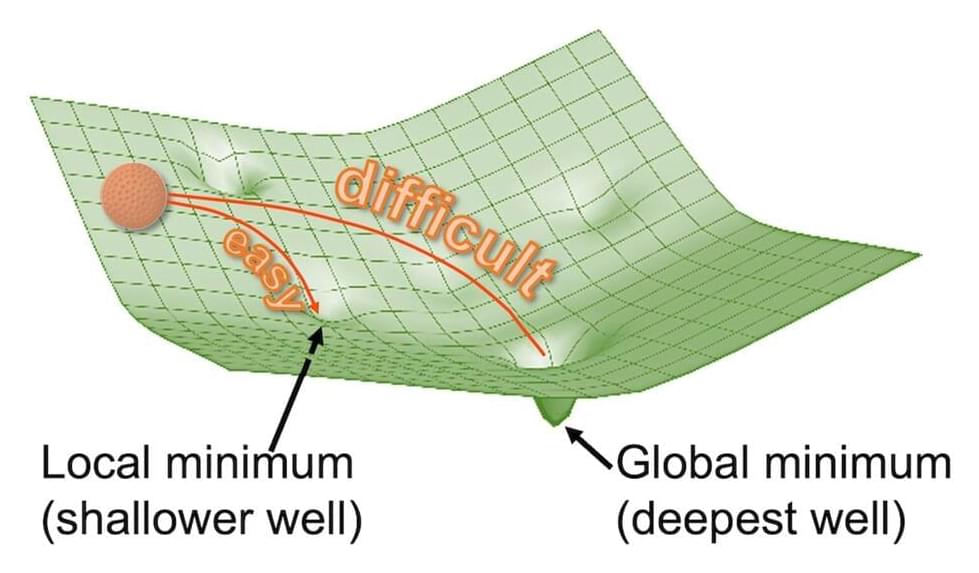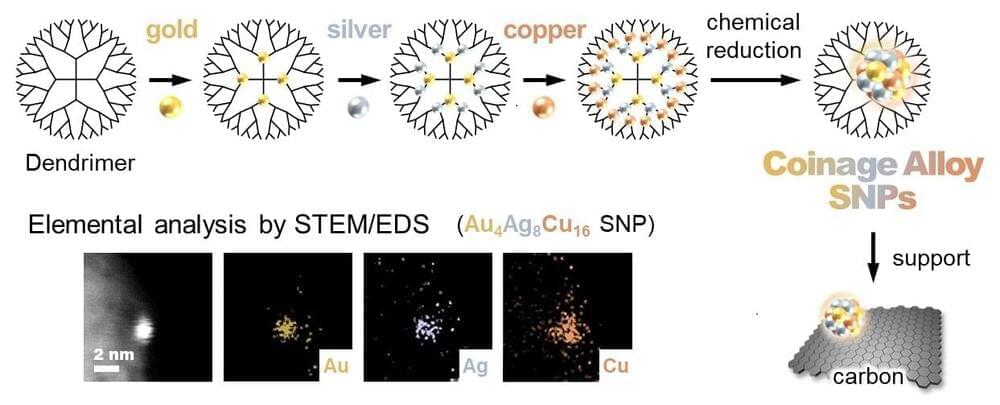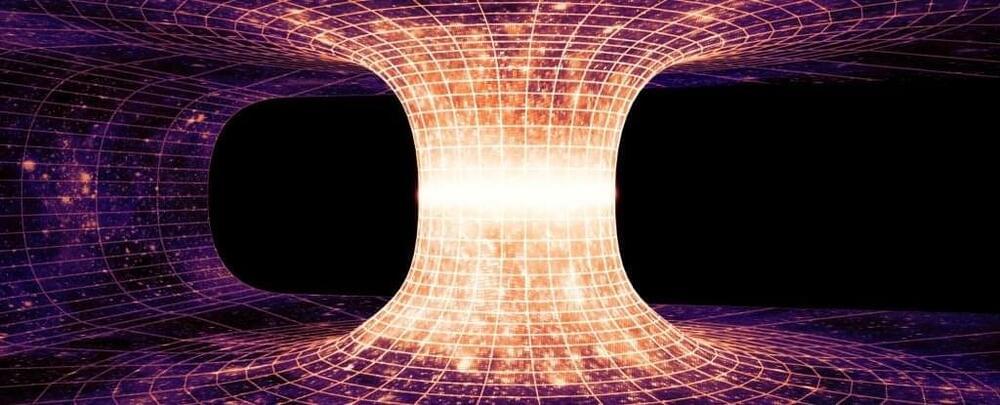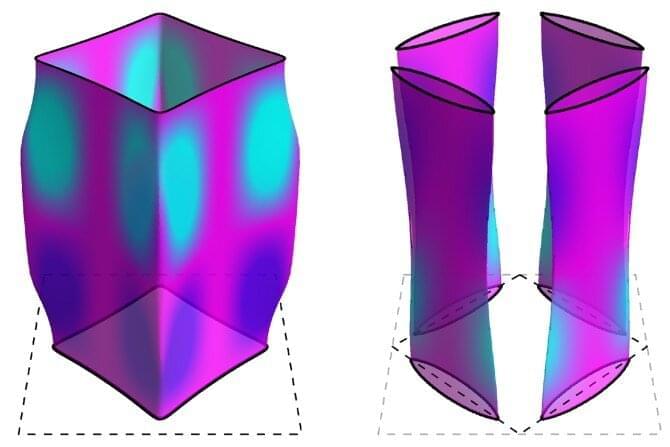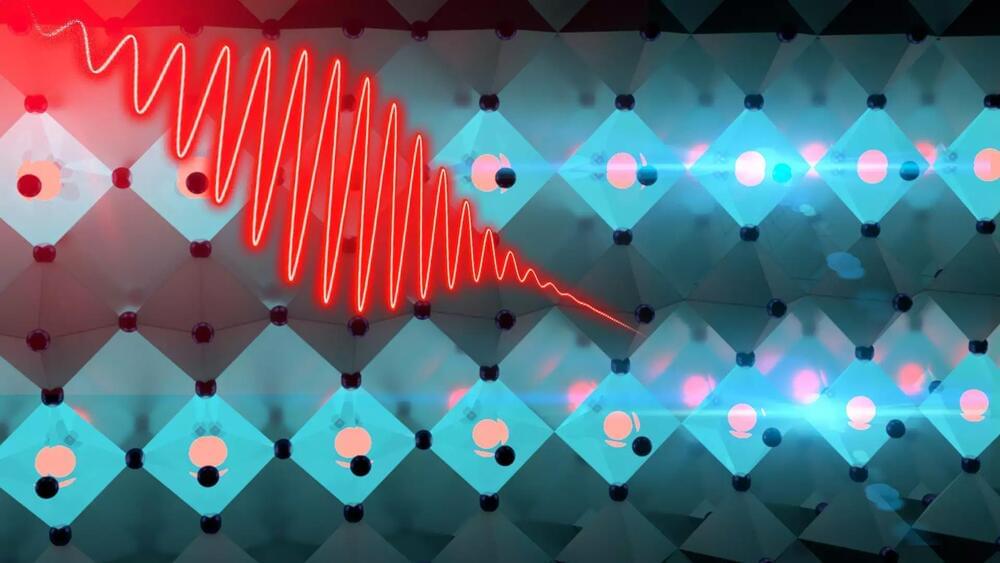Mar 14, 2022
Wormholes — Shortcuts Connecting Two Points in Spacetime — Help Resolve Black Hole Information Paradox
Posted by Shubham Ghosh Roy in categories: cosmology, mathematics, quantum physics
A mathematical analysis helps illuminate the puzzle over how information escapes from a black hole.
A RIKEN physicist and two colleagues have found that a wormhole—a bridge connecting distant regions of the Universe—helps to shed light on the mystery of what happens to information about matter consumed by black holes.
Einstein’s theory of general relativity predicts that nothing that falls into a black hole can escape its clutches. But in the 1970s, Stephen Hawking calculated that black holes should emit radiation when quantum mechanics, the theory governing the microscopic realm, is considered. “This is called black hole evaporation because the black hole shrinks, just like an evaporating water droplet,” explains Kanato Goto of the RIKEN Interdisciplinary Theoretical and Mathematical Sciences.
